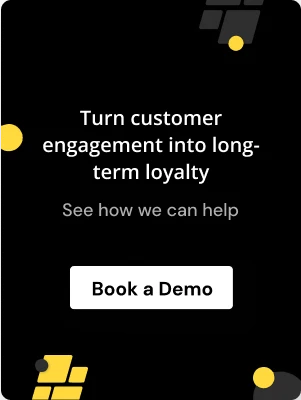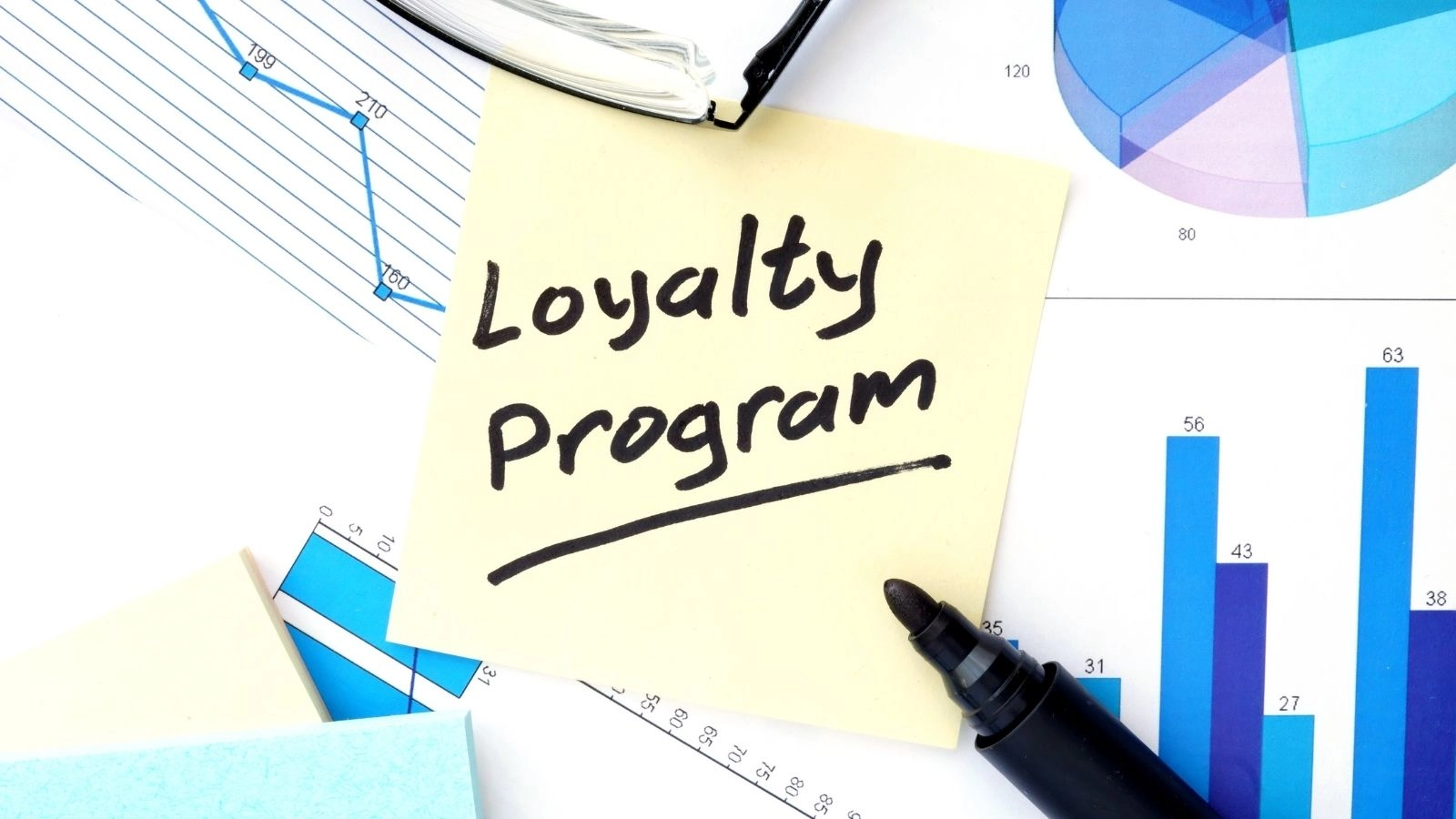.avif)
.avif)
Introduction
In today's highly competitive market, businesses need to find innovative strategies to boost their revenue and stand out from the competition. One of the most effective ways to achieve this is by focusing on customer engagement and loyalty. Engaged and loyal customers not only drive more revenue but also become advocates for your brand, encouraging others to do business with you.

Image Source: FreeImages
In this comprehensive guide, we will explore the importance of customer engagement and loyalty for boosting your bottom line. We will also delve into the world of data-driven engagement programs and how they provide the most value. Furthermore, we will discuss six proven ways to drive ROI using data-driven customer engagement. Finally, we will explore how to measure the success of your customer engagement program.
What is Customer Engagement and Loyalty?

Customer engagement refers to the relationship and trust that customers have with your business. It encompasses every interaction you have with your customers, from their first point of contact to ongoing support and service. The goal of customer engagement is to foster long-term loyalty and drive higher sales.
Building strong relationships with your customers is vital for business growth. Customers who feel connected to your brand are more likely to come back, spend more, and stay away from the competition. In fact, engaged customers represent an average 23% premium in share of wallet, profitability, revenue, and relationship growth compared to average customers.
Why is Customer Engagement and Loyalty Essential for Boosting ROI?

Customer engagement and loyalty play a crucial role in boosting your return on investment (ROI). There are two main reasons why engagement and loyalty are essential for a positive ROI:
Improved Customer Service: Studies have shown that 86% of consumers will stop doing business with a company if their customer service is subpar. By focusing on growing customer engagement, you also improve the way you interact with your customers, leading to increased satisfaction and loyalty.
More Repeat Customers: Engaged and loyal customers are more likely to become repeat customers. These customers not only spend more on each visit but also have a higher lifetime value to your business. Since it is 7 times more expensive to acquire a new customer than to retain an existing one, nurturing customer relationships is crucial for long-term success.
The Downfall of One-Off, Discount-Driven Programs

In the past, many businesses relied on one-off, discount-driven loyalty programs to attract and retain customers. However, these programs have several drawbacks and limitations:
They Don't Drive Incremental Revenue: One-off, discount-driven programs often attract bargain-hunters who are not emotionally connected to your brand. These customers are solely focused on getting a good deal and are unlikely to become loyal, repeat customers.
They Don't Offer Valuable Data: Discount-driven programs typically lack robust customer data, making it difficult to understand your customers' preferences and behaviors. Without this data, you cannot effectively personalize your marketing efforts or tailor your offerings to individual customers.
They Don't Foster Ongoing Relationships: Discount-driven programs are transactional in nature, focusing solely on attracting customers with temporary discounts. They fail to foster ongoing relationships with your customers, making it challenging to create long-term loyalty.
They Attract One-Time Customers: One-off, discount-driven programs often attract customers who are looking for a one-time deal. These customers are less likely to return to your business and do not contribute to long-term revenue growth.
To maximize your ROI, it's time to shift away from outdated discount-driven programs and embrace a more data-driven approach to customer engagement and loyalty.
The Power of Data-Driven Engagement and Loyalty

Data-driven engagement programs offer a deeper understanding of your customers and their preferences. By leveraging customer data, you can create highly personalized and targeted offers that speak to each individual customer on a personal level.
A robust data-driven engagement platform allows you to capture valuable information about your customers, such as their lifetime value, average spend, visit frequency, and itemized purchases. Armed with this data, you can increase check sizes, drive repeat business, and improve customer service.
For example, an automated engagement program can send personalized rewards to customers based on their spending habits. This can transform a coffee-only sale into a breakfast order or entice convenience store customers to enter the store after filling up their gas tanks.
6 Ways to Drive ROI Using Data-Driven Customer Engagement
Now that we understand the importance of customer engagement and loyalty for ROI, let's explore six effective ways to drive ROI using data-driven customer engagement:
1. Use Unique Customer Profiles to Understand and Alter Behavior

A high-performing customer engagement platform builds unique customer profiles tailored for individual customers. These profiles provide valuable insights into customer behavior, such as lifetime value, average spend, visit frequency, and even itemized purchases.
With this information, you can instantly send automated, personalized, and targeted specials and rewards based on customer spending habits. For example, if a customer frequently purchases coffee, you can offer them a special discount on breakfast items to increase their check size.
Additionally, the data in customer profiles can help implement the home stretch effect, where customers spend more to reach a reward. By leveraging this effect, you can further boost revenue and encourage customers to increase their spending.
2. Reward VIP Customers to Drive ROI

Not all customers are created equal when it comes to their impact on your revenue. Approximately 20% of your customers drive about 80% of your revenue. These VIP customers are your most important customers, and it's crucial to reward them for their loyalty.
A data-driven platform can identify your VIP customers based on their spending thresholds. By rewarding these VIP customers with special offers and incentives, you can increase their average check size by an average of 17%. This not only boosts revenue but also strengthens their loyalty to your brand.
3. Use Winback Campaigns to Engage Customers and Reduce Churn
Churn, or the loss of customers, is a challenge that many businesses face. It's important to identify and address churning customers to prevent further revenue loss. With a data-driven winback campaign, you can automatically reach out to churning customers and entice them to come back.
By tracking engagement data, you can identify customers who haven't made a purchase in a while or have significantly reduced their frequency. These customers can be targeted with personalized offers to encourage them to return. Winback campaigns have been shown to generate 6 times more ROI and drive 49% of lapsed customers back into your store.
4. Collect Real-Time Customer Feedback
Customer feedback is invaluable for understanding their experiences and identifying areas for improvement. By collecting real-time feedback, you not only gain valuable insights but also show your customers that their opinions matter.
A data-driven customer engagement platform allows you to collect feedback in real-time and respond personally and privately to customer comments. This not only helps resolve any issues but also increases customer satisfaction and loyalty. In fact, responding to critical feedback has been shown to grow incremental revenue by 21%.
5. Utilize Timeshift to Alter Customer Behaviors

Every business experiences slow periods, but what if you could drive more traffic to your least busy hours? With a feature called Timeshift, you can do just that. By sending targeted offers to members during slow business hours, you can increase spend at all times of the day and impact long-term customer behavior and lifetime value.
For example, you can send a special reward to a customer who frequently visits your bar on Tuesdays and Thursdays for happy hour. This reward can incentivize them to stay longer, order more items, and increase their overall spend. Timeshift has been shown to increase traffic during slow days by 18%, boosting revenue during typically less busy periods.
6. Integrate Customer Engagement with Email Marketing
Email marketing is a powerful channel for connecting with your customers and driving revenue. By integrating your customer engagement data with your email marketing efforts, you can create highly targeted and personalized campaigns that yield impressive results.
Emails targeted to loyalty program members have been shown to generate higher open rates, click-through rates, transaction rates, and revenue per email compared to regular promotional emails. By offering personalized rewards and incentives through email, you can further nurture customer loyalty and drive ROI.
Measuring the Success of Your Customer Engagement Program

Measuring the success of your customer engagement program is essential for understanding its impact on your bottom line. A robust customer engagement platform should offer various metrics to track your program's effectiveness:
Number of loyalty members: Measure how many customers you are able to seamlessly connect with through your engagement program.
Number of VIP customers: Track the number of high-spending VIP customers your business has identified and rewarded.
Winback ROI: Measure the revenue generated from messages sent to lost customers through winback campaigns.
Feedback response rates: Discover how much additional feedback you are gaining from your customers and how effectively you are addressing their concerns.
Feedback ROI: Track how likely customers are to return after receiving a personalized response to their feedback.
Increased visit frequency: Measure how engagement and loyalty programs impact customer visit frequency and overall spending.
Check increases: Monitor the boost in sales driven by your customer engagement efforts and evaluate their impact on revenue growth.
Revenue: Ultimately, your success is measured by same-store sales growth. A data-driven engagement platform should drive incremental revenue and prove its impact every step of the way.
By regularly tracking these metrics, you can gain valuable insights into your program's performance and make data-driven decisions to further optimize your ROI.
Conclusion
Customer engagement and loyalty programs are powerful tools for boosting your bottom line. By adopting a data-driven approach to engagement, you can personalize your interactions with customers, reward their loyalty, and ultimately drive revenue growth.
In this guide, we explored the importance of customer engagement and loyalty, the limitations of discount-driven programs, and the benefits of data-driven engagement and loyalty programs. We also discussed six effective ways to maximize your ROI using data-driven customer engagement, from using unique customer profiles to understanding and altering behavior to integrating customer engagement with email marketing.
Remember, measuring the success of your customer engagement program is crucial for optimizing its impact on your bottom line. By tracking key metrics such as the number of loyalty members, VIP customers, winback ROI, feedback response rates, and revenue, you can continually refine your approach and drive even greater ROI.
So, take the insights and strategies shared in this guide and apply them to your business today. Embrace the power of data-driven customer engagement and loyalty programs, and watch your revenue soar while building lasting relationships with your customers.
FAQs
Start Building Customer Retention That Lasts


.png)


.webp)
%201.webp)

